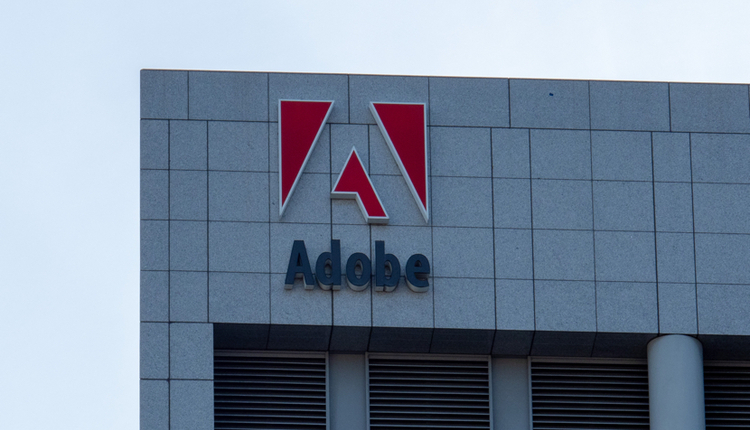
Image by: vladans, ©2015 Getty Images
In retail banking, for example, customer behavior is rapidly changing, as reliance on the branch as a primary customer touchpoint declines and preference for mobile and other digital interactions increases. In fact, 2015 research from J.D. Power and Associates found that consumer satisfaction with retail bank digital channel functionality has declined from 2014, reinforcing the importance of technology to building strong engagement in a banking relationship.
Why "form" is becoming a four-letter word
Despite these marketplace realities, many companies continue to use paper or PDF forms to collect customer information and complete critical tasks, such as customer onboarding, opening accounts and completing credit applications, to name a few. From the customer's perspective, the experience is less than optimal. Manual form completion requires unwelcome tasks, such as negotiating tiny check boxes, encountering irrelevant or unclear fields and redundant data collection. Customers are forced to take the time to download necessary forms, fill them out and send them back via the mail or email. Forms requiring a signature invariably need to be scanned or copied. Moreover, data integration cannot be achieved with an analog approach.
These paper-based processes typically involve disconnected steps that require significant coordination and downstream actions internally and with the customer to complete a transaction. With numerous processes and handoffs between parties involved, including scanning or rekeying information, errors are easily introduced and vital customer data can be lost, remain incomplete or simply become unavailable while being processed.
A case in point: Customer onboarding
Customer onboarding is a typical example of this paper processing dilemma. Customer onboarding is the first—and perhaps most critical—opportunity to set the stage for the customer's impression and experience with a financial organization. Citing the J.D. Power research, a recent article in The Financial Brand stated, "One of the most economical and impactful ways to improve customer satisfaction is a strong new customer onboarding process."
Yet, despite the importance of customer onboarding, many businesses continue to place the burden on the customer to expend an inordinate amount of time and attention to physically process a form. The customer burden and processing wait time inherent in this physical processing runs the risk of driving customer satisfaction levels into an abyss.
"Employing digital engagement for data collection enables the auto-completion of required information from a records database."
Fortunately, manual processing of forms is not the only option. Advances in technology provide a cost-effective, efficient alternative. Dynamic electronic formats and interview methods are now available that can be applied to numerous processes that involve data collection. These digital processes can be made available to customers and employees using devices such as personal computers (PCs), laptops, tablets or smartphones. With the proper set of capabilities, digital solutions will dramatically improve the user experience.
Employing digital engagement for data collection enables the auto-completion of required information from a records database.Once a user is identified, relevant data concerning that user can easily be retrieved and populated on a form. An effective solution will have the ability to integrate with a variety of enterprise systems as part of the data collection workflow to automate the use of information to move a transaction forward or create a customer record. The end result can be a streamlined and more reliable data input process and improved customer experience.
Because customer preferences for interaction involve a diverse set of devices, an HTML5 experience is critical for both online and offline experiences. Moreover, users expect to be able to pause an activity and even restart a process from a different device at a later time. Employing HTML5 technology will enable a financial institution to effectively reach users wherever they happen to be and at the time they prefer to interact.
Adopting a digital platform for capturing information overcomes many of the inherent disadvantages of static forms. A digital approach makes it possible to transform an interaction so that it has the "look and feel" of the enhanced experience users have become familiar with via the web, PCs, tablets and mobile devices. Auto-completion is just one example. Additionally, the experience should avoid requiring information or prompting actions that are not relevant based on information already provided. Helpful information, including hints and navigation aids, can also be integrated in the experience. Further, a digital presentation should enable signatures to be captured by the device the user is holding in his or her hand, rather than necessitating another process, such as faxing, mailing or scanning and delivery via email.
Cost reduction your business will love
While a digital data collection strategy can deliver significant improvement in customer experience, it also has the potential to greatly reduce a financial organization's operating costs. The cost of doing business when it involves manual data collection across customer and employee processes is astonishingly high and difficult to quantify or manage. Traditional forms-based processing involves costs associated with form design or acquisition, printing, distribution, processing and storage. Processing the forms entails compliance issues, error correction and even rerouting to the person initially filling out the form to correct mistakes or complete missing information.
Companies adopting a digital approach to data collection processes can avoid many of these unnecessary operational expenses. Costs related to ensuring compliance as well as information collection (and in many cases recollection) will be minimized through a truly automated digital forms solution. The need for human intervention to assess whether critical information is missing will be eliminated. Instead, users themselves will provide real-time data concerning the information completed or still required. Paper and storage costs will be dramatically reduced as well.
Meeting the expectations of emerging, tech-savvy customers
As the J.D. Power research shows, customers have significant expectations concerning an institution's use of technology for interactions. This trend is especially prominent with Generation Z, customers who are just reaching adulthood and comprise approximately one-fourth of the population. Today's customers will not tolerate yesterday's analog approach to information capture. In fact, paper transactions may be entirely foreign to them as they are accustomed to using their mobile device to accomplish formerly paper-driven tasks.
To remain competitive, organizations need to identify paper processes that inhibit the customer experience and find an affordable solution that quickly moves to a digital experience that will transform laborious and constrained manual processes into meaningful customer interactions anywhere and anytime the customer wants them.
Neal Gottsacker is president and CEO of airSpring Software. With more than 25 years of experience in technology and software businesses, Mr. Gottsacker was VP and general manager of HP Exstream. Mr. Gottsacker’s experience also includes several SVP and VP roles driving product strategy, development and support at Exstream Software, Metavante and Mortgagebot.com. He can be reached at ngottsacker@airspringsoftware.com.























